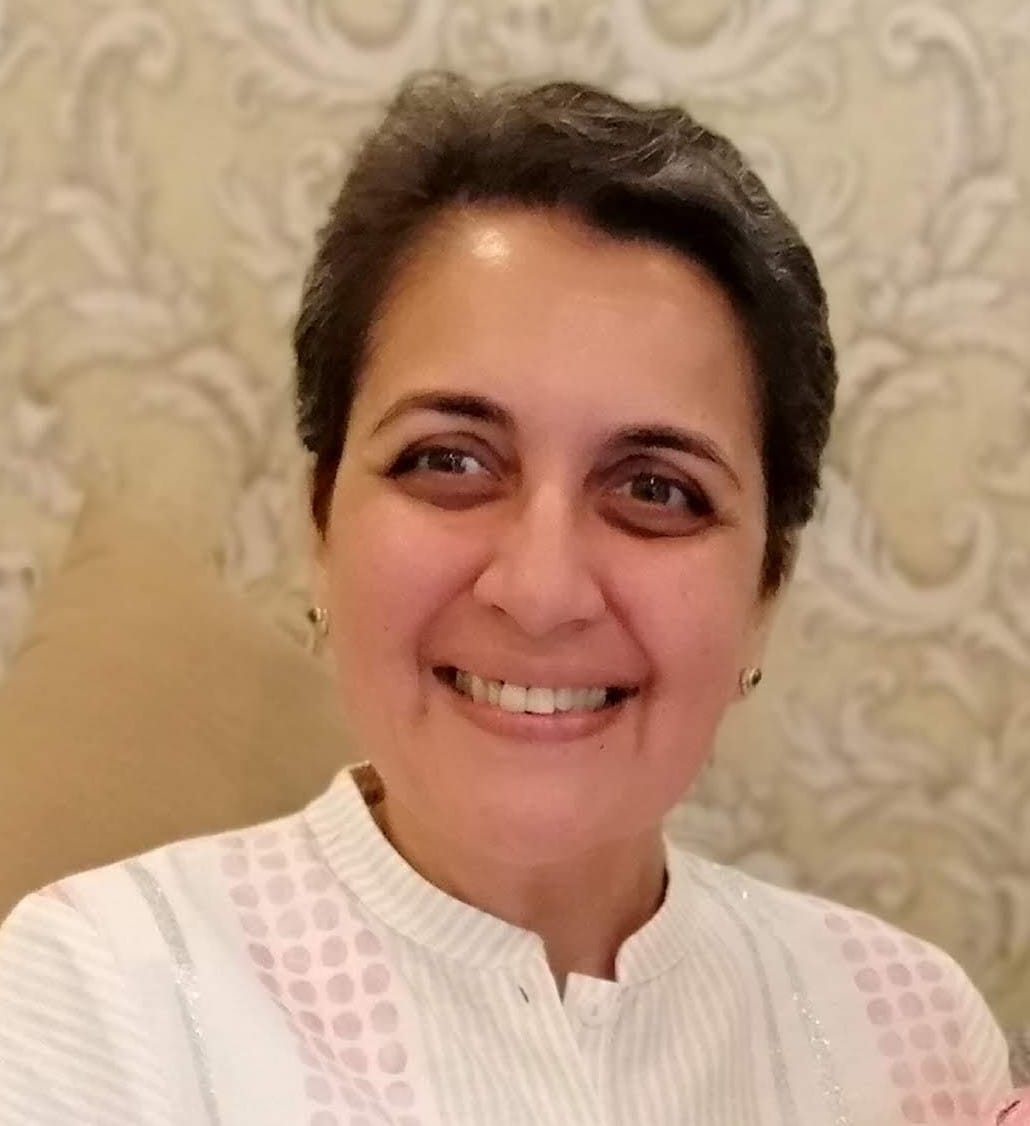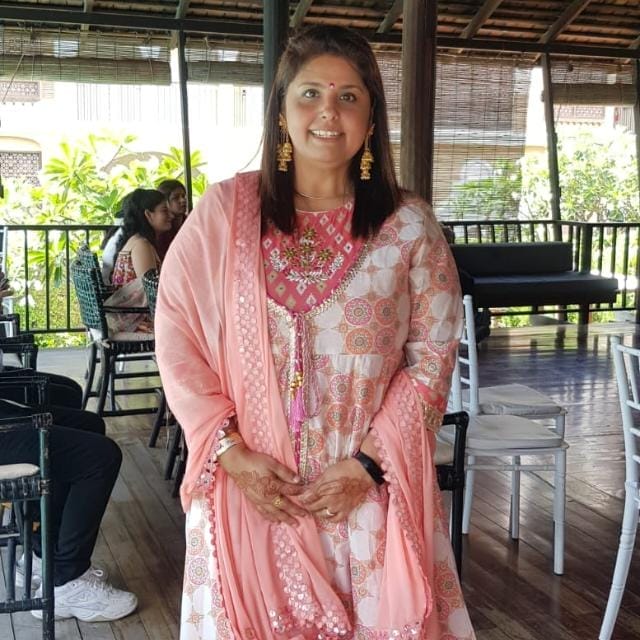How they’re avoiding the empty nest syndrome.
By Jasnam Sachathep
For a lot of us, an ‘auntypreneur’ is someone whose business is to get up in your business! However, many aunties in our community are doing much more than that. To avoid the empty nest syndrome that comes with having grown kids working or studying abroad, many have found innovative ways to spend their time doing meaningful things. For them, work doesn’t mean an office or a desk, but rather, other creative outlets that keep them occupied and happy. Three auntypreneurs shared their stories with us.
SANGEETA SIRINTHIPAPORN, 52
Mother of two; both living and working in Chiang Mai
Teacher and practitioner of ‘natural wellness’
Tell us a little more about what you do.
I practice and teach ‘natural wellness’ modalities including Acupressure, Ayurveda, Aromatherapy, and Meridian Therapy.
My work involves:
. Treatment sessions with clients to rebalance their natural elements, and give them knowledge on how to align with nature’s rhythm so as to sustain optimal health and well-being;
. Conducting workshops, retreats and training programs for spas and wellness centres; and
. Creating and supplying therapeutic oils and other related products.
Why and how did you start?
I started in 1999 – I had two kids just one and a half years apart, so I quit my job as an editor and decided to give my time and attention to nurturing my children. Then they started going to school and I had a few hours to myself. At that time, my older sister, Suchada, had a centre for alternative and complimentary therapies and she asked me to help her out with general administration matters for a few hours.
A few months later, Suchada was conducting a class for Acupressure Reflexology and she asked me, “Why don’t you join? You can use it for your children and family even if you don’t want to practice professionally.” My initial response was not so enthusiastic but I thought, “Ok, no harm in learning.” That’s how I took my first step into this field, and I was fascinated and wanted to learn more. And the journey began – from Acupressure, I went on to Ayurveda, which gave me the valuable tool of finding the root cause of imbalances, as well as the route to rebalance oneself with therapies and simple changes in diet and lifestyle. Aromatherapy, Meridian therapy, Homeopathy and CST were gradually added on over the years. Until today, I keep learning so I that I can give the best back to all my clients and students.
How many hours a week do you spend on this?
Now, about four hours a day, five days a week. I like to keep a balance between my home and work.
What do you get from it?
The joy and satisfaction of being able to help others, as well as continuous growth. Connecting with people from all walks of life brings with it a lot of learning and understanding. As human beings, this is exactly what we are here for – to learn and evolve. And when we are able to imbibe this wisdom in our work and daily routines, life becomes fulfilling.
Does doing this help keep you busy?
Even though my kids are with me, one does feel an emptiness time and again as the relationship with our children changes all the time. As babies and young children, it was more about nourishing and ensuring their well-being so we had to be constantly there for them – physically, mentally and emotionally. As children grow up, needs change – they become more independent, which is what we want them to be. As parents, our time and attention are not needed as much as before. I guess this is where the feeling of emptiness comes. So, the key is to direct that ‘bonus’ time and attention to something that fulfils us, and to keep learning from the universe that has provided so much for us – all we need to do is to tap within this treasure house of knowledge and wisdom.
For most mothers in our community, their whole lives are about raising their children and giving their full time and energy to their families. Now that the kids have grown and have their own lives, it’s time for them to find their own happiness and do things they love and enjoy!
MINI HORA, 47
Mother of two, one in Bangkok, and one in Melbourne, Australia
Housewife and pranayama teacher
Why and how did you start teaching pranayama?
I started a few years ago learning from someone else, although I did not do it regularly. However, due to the COVID lockdown, in the past year, I started getting into a routine and since then, I now have around 40 people that have joined me. The fact that they enjoy and benefit from it makes me more motivated, and keeps me going to lead them and be regular with my pranayama every day. I do this on a daily basis for an hour, from 8-9am. I only give myself time off when I’m travelling.
How does pranayama benefit both you and others?
By starting my day with pranayama, I get to practice mindfulness, which I carry with me. It makes me feel relieved and healthy at the same time. Moreover, I do feel like it has improved the quality of my day-to-day life, especially my energy levels.
I would highly encourage everyone to practice pranayama, whether a few times a week or even just for 10 minutes; you will definitely see a difference. Pranayama trains the lungs and improves the capacity of your respiratory system greatly. It may also help to decrease stress, improve your sleep quality, increase mindfulness, and even reduce high blood pressure. You’ll see a difference in yourself once you incorporate this into your routine.
Pranayama has been there since ancient times, and its benefits for health, mind and body has been intensely studied and proven. Bringing this into the lives of my friends and then eventually their families gives me happiness and contentment. I feel so blessed when my friends say that the elders in their family are also doing pranayama and they feel energetic and healthy. These words resonate with me, and I strive to be consistent always so I don’t miss any chance of improvement in me. I have learnt that fulfilment and satisfaction comes in giving happiness to others.
VANITA ‘ROZZY’ KHURANA, 55
Mother of three, all of whom live abroad
Homemaker; freelance English teacher; online doodle teacher
Tell us about these doodle classes, and how you yourself started.
My first doodling sessions started as a trial session with Sapna; my mentor and teacher. We started two years ago during the lockdown period and it’s been wonderfully therapeutic, till today. We still meet every week on Zoom for two-hour classes. All you need are Fineline pens and some paper to start with – the simplicity of this made it so doable, and fun to share.
The surprising part for me is that from a learner, I became a teacher too. After by chance I’d shared my art with some friends, their interest in expressing themselves through this method of art grew, and since then, I’ve started teaching too.
How often do you do this?
It’s now become a part of my daily routine, almost like making a menu for the day. It’s just that my menu now includes searching on the internet for ideas and experimenting with those ideas. Thanks to the Zentangle community and doodle designs available online, I can spend hours doodling without realising it, till my eyes complain, and my back too!
What do you get from it?
I’ve become more aware, as I use it more like my daily art journal – a time for meditation and self-introspection. There are so many enriched life lessons I get from all the sharing we do during our sessions. As we doodle, coordinating our brain and hand movements makes us go through many phases of emotions, and this can be so therapeutic. When done regularly, you will notice the many ways the brain works, with the emergence of subtle thoughts that you’re not even aware of.
Does being a doodle teacher help you keep busy and miss your kids a little less?
I just remember feeling so overwhelmed and overthinking while my children were growing up, and then the inevitable period of them leaving home came too soon. However, the ‘nothing to do’ period brought out all my hidden hobbies, and made me realise that to persist, I required the support of family and friends.









